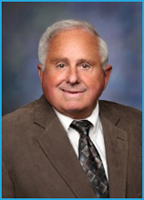Accountable Care Organizations’ Rise in Quality a ‘Home Run’
“The ACOs have shown that, in the first three years, they’re able to improve the quality. They both provide higher quality and they’re quality-improving from year to year. That’s a home run. In some respects, that’s been the real success story of ACOs."

- Recently, the Centers for Medicare & Medicaid Services (CMS) announced that there will be 121 new accountable care organizations participating in the Medicare Shared Savings Program and the Next Generation ACO Model. This means that the ACO model will finally spread throughout 49 states and the District of Columbia.

Out of all of the new ACOs, 100 will join the Medicare Shared Savings Program and 21 will be part of the Next Generation Accountable Care Organization. In addition, CMS released information about the accountable care organizations looking to continue participating in the Medicare Shared Savings Program. Out of the original 220 ACOs, 147 accountable care organizations are looking to take part in the Medicare Shared Savings Program in 2016, the National Association of ACOs reported.
To learn more about the future of accountable care and the recent CMS announcement, HealthPayerIntelligence.com spoke with Clif Gaus, the President and CEO of the National Association of ACOs.
HealthPayerIntelligence.com: What are your expectations and predictions for the 121 new ACOs being introduced by CMS?
Clif Gaus: “You have to segment them into a couple of different categories. 21 of them are the advanced payment ACOs under Next Generation. Like their predecessor the Pioneer that had 32 in the program whittled down to nine now, I would guess there would be dropouts from that program over the course of those five years. They will also add more applicants or awardees next year.”
“There may be another 15 or 20 added to the program next year. It may initially grow some, but as ACOs learn the difficulties of meeting all the CMS requirements and transforming healthcare, [some of them will] drop out.”
“Whether in the end, the program will have net savings; I think remains to be seen. I’m optimistic that it will. As Pioneer has done, it’s shown that they can find savings and improve quality. These are the most experienced organizations in our country when it comes to managing cost and quality.”
“I’m somewhat optimistic that it will be successful, but it’s such a small part of the accountable care movement, that it, in my view, isn’t where all the focus should be. The focus should be on the 400+ organizations that are in the Medicare Shared Savings Program, as only 22 are full-risk. The majority of the ACOs – 95 percent of ACOs in country – share savings with CMS and use their own money to do that.”
“They’re risking their own operations’ money and startup money to get those savings and that program is also slowing in its growth.”
HealthPayerIntelligence.com: What steps can accountable care organizations take to garner more cost savings for the federal government?
 Clif Gaus: “In my view, the most important road to success is finding ways to coordinate and manage post-acute care and hospital care. One – trying to avoid hospitalizations. Two – providing the most efficient and effective post-hospital care through home health agencies. That’s the key to success.”
Clif Gaus: “In my view, the most important road to success is finding ways to coordinate and manage post-acute care and hospital care. One – trying to avoid hospitalizations. Two – providing the most efficient and effective post-hospital care through home health agencies. That’s the key to success.”
“Now what do they need to do that? They need really good, current data on their beneficiaries that are in their ACOs to know what their risks are and to target their services to that high-risk population. Also, they need near real-time or real-time data on the patients when they are hospitalized or show up in emergency rooms. That piece of data, for the most part, is missing in every ACO.”
“Some have been able to partner with hospitals to be notified when one of their beneficiaries has been admitted to the hospital or emergency room, but these one-on-one deals are very hard to come by and the majority of hospitals don’t want to provide that data.”
“The government sits on all of this data. The government knows in real-time when a beneficiary is in the emergency room or being considered for admission to the hospital because hospitals and emergency rooms have to notify the government of that and seek the benefits.”
“The government has refused to help the ACOs in this issue. It’s been a very difficult road for us to convince the government to give ACOs that data. If the government wants ACOs to succeed, they should find a way to provide the ACOs with those notifications of admissions and emergency room visits.”
HealthPayerIntelligence.com: What is the reason behind why the government is not providing ACOs with real-time data on hospital admissions and emergency room visits?
Clif Gaus: “It’s speculation on my part. We’ve negotiated with the government for almost two years trying to work this out. CMS says that they don’t believe this kind of data will be very helpful to ACOs. Also, they don’t have enough money to provide these notifications to the ACOs. Additionally, they’ve recently ruled that, because an ACO is technically not a provider – ACOs are a collection of providers or partnerships of providers – CMS cannot provide beneficiary-specific data to an ACO.”
“However, they provide other beneficiary-specific data to ACOs such as claims for beneficiaries. That third argument is a red herring. In an event, it’s because they don’t think it’s necessary, they don’t have the budget for it, and technically they’re not permitted to provide it.”
HealthPayerIntelligence.com: Why do you think some ACOs have left the Medicare Shared Savings Program?
Clif Gaus: “The principle reason is that they weigh off the cost of their operation against continuing as an ACO. Those costs include an IT infrastructure so that they can process the beneficiaries’ claims, understand where their care is being received, and who are the high-risk beneficiaries and high-cost beneficiaries. There’s an operational cost there.”
“Secondly, there’s an operational cost for the care-coordinating nurses who reach out to the beneficiaries and try to help them migrate through the array of choices there are for post-acute care, when they do or don’t need a hospital admission, and help them facilitate their preventive care.”
“Those nurse navigators are expensive and an ACO has to weigh whether it’s worth continuing these costs. Is that worth the chance that they’ll be able to lower the cost and find savings? Those ACOs that have had some success stay in the program. Those that find it more challenging and have not had success, leave the program.”
“We know what the costs are. The gross numbers range from under a million dollars to $10 million for very large ACOs. CMS has to provide a business model that allows them to share in enough savings and for those savings to exceed the operating cost they’re putting into it. That hasn’t worked out in a large number of ACOs and many of those have dropped out of the program.”
HealthPayerIntelligence.com: Since only about 25 percent of ACOs have earned shared savings in the Medicare Shared Savings Program, do you think accountable care organizations are capable of meeting quality improvement and cost cutting goals?
Clif Gaus: “It’s a hard journey and the quality goals for achieving and keeping savings are very high relative to fee-for-service. There’s two different standards here and learning to transform care and provide efficient and better quality takes time.”
“The ACOs have shown that, in the first three years, they’re able to improve the quality. They both provide higher quality and they’re quality-improving from year to year. That’s a home run. In some respects, that’s been the real success story of ACOs. That’s a great story for beneficiaries. In fact, the converse of that, sadly, there’s almost 70 ACOs that will no longer be focused on that.”
“The other side of that equation is the ACOs have to invest so much of their own money that without a quick return, they run out of money to continue. I believe that the ACO concept and model is still the best we have to lower costs and increase quality, but it can take a much longer time and needs greater rewards from the government to keep the movement growing.”
“In some respects, there is a carrot on a stick approach. The stick is that the ACOs put in their own money and risk this money to do this and the carrot is how easy it is for them to achieve savings and keep those savings. Right now, we probably need more carrots on the stick.”
“We’re trying to convince CMS that higher-performing ACOs on the quality side should get a better share of the savings. This makes sense. Medicare Advantage rewards the MA plans for achieving high quality. CMS doesn’t reward ACOs for quality. If you’re perfect, you get to keep what you save. If you’re not perfect, you lose some of the money you save. It’s a reverse incentive from MA plans and we’re trying to fix that.”
HealthPayerIntelligence.com: What are the advantages of accountable care organizations from the health insurance perspective?
Clif Gaus: “Well, from the payer perspective and this includes not just Medicare and Medicaid but the private payers – there is continued growth of ACOs within the private payer world as well – it provides a benefit of the narrowing of the network but with full flexibility for the patient to go out of network with no penalty.”
“You get the benefits of an improved network. The beneficiary has somebody that’s caring for their entire set of healthcare needs. The payer hopefully sees some savings from the ACO’s efforts to keep the patient in the network and provide optimal care for them.”
“Both Medicare and private payers are in this model because they see better quality and they’re hoping for savings in their favor as a payer.”
